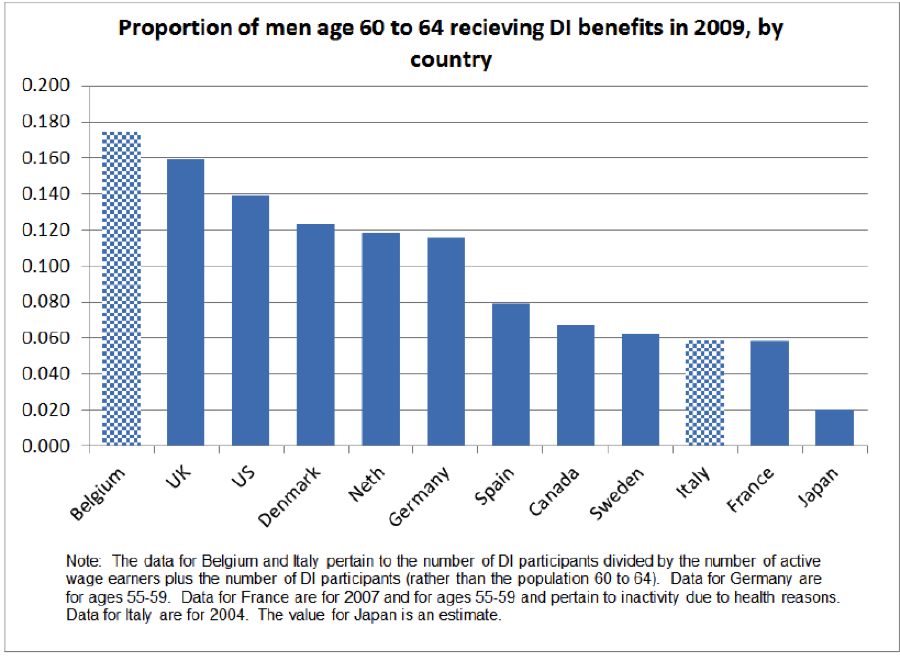In a series of papers, Coile, Milligan and Wise look at Social Security Programs and Retirement Around the World. In the sixth installment of the series, the authors look specifically at disability programs. Although stereotypically one would believe that most people exit the workforce due to choice and rely on Social Security, job pensions, and personal savings to finance their retirement, in many cases, workers become disabled and have significant difficulties working.
The paper finds that not only is there significant variation in the disability insurance programs across countries, but also the share of individuals who collect disability also varies across nations.
The authors key findings are described below:
First, the proportion of men 60 to 64 collecting disability benefits ranges widely across countries, ranging from 17 percent in Belgium to 16 percent in the UK to 14 percent in the US to 6 percent in Italy and France to 2 percent in Japan—including Belgium and Italy that use a DI proportion different from the other countries. Second, the data show that in all countries, with the exception of the United States, there was large variation over time in DI participation rates with substantial decline in participation beginning in the early to mid-1990s in many countries. For example, in Canada participation in the 60-64 age group declined 49.6 percent between 1995 and 2009. In the UK, DI participation declined 49.6 percent between 1996 and 2012. In the US on the other hand DI participation between 1990 and 2012 increased by over 30 percent. Third, variation in DI participation over time was unrelated to trends in health, which improved consistently over time based on declines in mortality. Fourth, and perhaps most striking, DI participation in all countries is very strongly related to education level, even controlling for health. Fifth, descriptive data show a noticeable inverse relationship between DI participation and employment over time.
- Courtney Coile, Kevin S. Milligan, David A. Wise. Social Security Programs and Retirement Around the World: Disability Insurance Programs and Retirement – Introduction and Summary. NBER Working Paper No. 20120. May 2014.

1 Comment